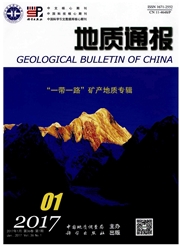

 中文摘要:
中文摘要:
通过对西藏札达盆地香孜剖面沉积物粒度、磁化率、碳酸盐等多项环境指标的分析,探讨了香孜组2.68~1.36Ma以来的气候环境演变。结果表明2.68Ma的古格运动以后,香孜组的气候逐步向干旱、寒冷转变,在约1.81Ma之后,札达第三纪古湖经象泉河向南外泄并被疏干。上述3项环境指标指示的环境特征和演变与介形虫、孢粉等资料,以及喜马拉雅山的隆升都有很好的对应关系。
 英文摘要:
英文摘要:
Based on analyses of several environmental proxies such as magnetic susceptibility, grain size and carbonate content, the authors discuss the environment change at the Qangze section in the Zanda basin, Tibet, from 2.68 to 1.36 Ma. The climate of the Qangze section became dry and cold gradually after the Guge movement at 2.68 /Via. After about 1.81 Ma, the Tertiary paleolake in the Zanda basin discharged southward features and evolution indicated by the three above-mentioned and sporopoUen and also the uplift of the Himalayas. via the Xiangquan River and was drained. The environmental environmental proxies have good correspondence with ostracods
 同期刊论文项目
同期刊论文项目
 同项目期刊论文
同项目期刊论文
 期刊信息
期刊信息
